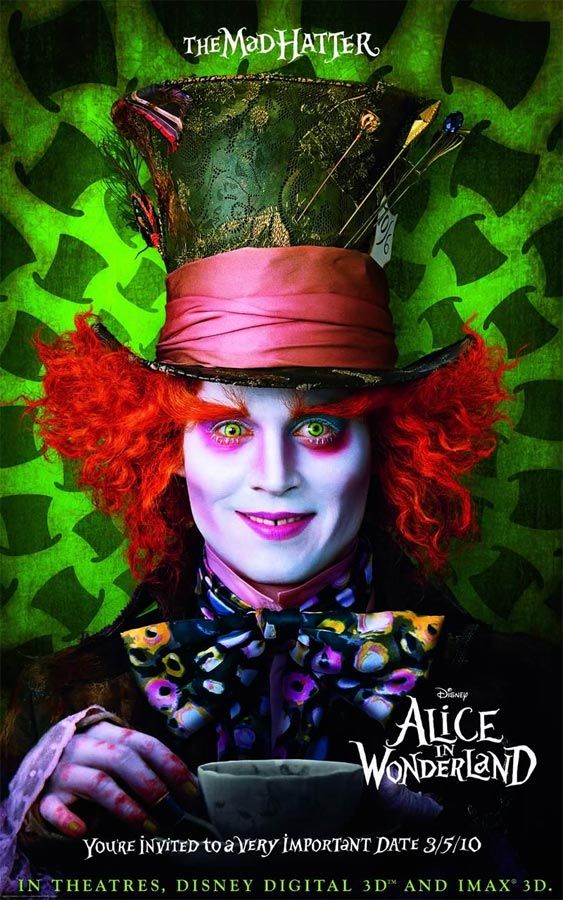
We live in a three-dimensional world, but film is a two-dimensional medium. So how do you create an illusion of depth where there is none? It’s a mind game, and the half dozen companies able to play it well are cashing in on Hollywood's eagerness to turn 2-D films into 3-D.
Some of the films being converted to 3-D are old movies that are being re-released in theaters, while others are new releases that were originally shot in 2-D but converted in post-production.
There's more than one way to shoot a 3-D production, but here's why it works:
“Most people see through two eyes and, although both eyes automatically focus on the same object, each eye sees it from two slightly different positions, which creates two separate images,” Jackson Myers, director of corporate communications for IMAX, told TechNewsDaily. “The brain naturally fuses these images together, creating a single, three-dimensional image.”
That process is mimicked in 3-D movies. A left-eye view and a right-eye view of a scene are projected onto the screen simultaneously. When you wear 3-D glasses, your left eye sees only the left view and your right eye sees only the right view. Your brain does the rest, fusing the two images to create a single stereoscopic view just like in the real world.
Hollywood alchemy
There are several schools of thought on the best way to create that stereoscopic view. One approach, used by director James Cameron for his recent blockbuster "Avatar," is to shoot the original with twocameras, creating a stereoscopic view from the get-go.
Sign up for the Live Science daily newsletter now
Get the world’s most fascinating discoveries delivered straight to your inbox.
The more common and less costly approach, however, is to shoot the film with a single camera and then use computer software on a digital copy of the film to create a slightly different perspective, and then project the two images simultaneously.
Yet a third approach involves creating two completely new perspectives from the original film, a technique developed by 3-D pioneer Legend Films, which converted Tim Burton’s latest movie, "Alice in Wonderland," from 2-D to 3-D.
“The Legend 3-D process creates a stereo 3-D perspective of two eyes from 2-D footage rather than just [a second eye perspective] from a 2-D image,” said Barry Sandrew, who is the inventor of digital colorization and founder and president/COO of Legend.
The process begins with the breakdown of the film into shots and scenes, locations and transitions, Sandrew explained. After the film is dissected into its smallest parts and 500 to 1,000 representative frames are selected, a "depth score" is created that provides the variations in 3-D effects throughout the film.
The challenge is determining the amount of depth to apply to objects within the image. “You want to create a 3-D that feels natural to the audience," Sandrew said. "It can’t be too aggressive, but it has to be aggressive enough. You need a calculated balance in order to maintain realism. We can make the image appear anywhere from right in front of your face to an infinite distancebehind the screen. You want to get a film that transports you to a place you can’t normally go.”
3-D magic
Once the depth score is approved by the director, computers take over. Special software segments everything in a scene and then computer graphics are used to simulate all of the objects in that scene. Legend then adds optical flow techniques and sophisticated pattern analysis to help ensure accurate scene transitions and accurate backgrounds. The process takes between 12 and 16 weeks and costs a fraction of what it would to shoot in 3-D.
While computers and software are important for 3-D film conversion, it is the movie director who must select the representative scenes that are used to create the depth score, and it requires a human eyeto ensure that the computer-generated effects look right.
“It’s critical that the director is cognizant of depth transitions from shot to shot,” Sandrew said. “If the transitions are too extreme it will give the audience a headache. Just like a music score, an audience will tire from a constant, high-energy, high-volume score throughout the film. The same is precisely true for depth.”
So how do the final results stack up? Can a 3-D movie converted from 2-D ever look as good as one originally shot with 3-D cameras?
“They can actually look better,” Sandrew said. “Camera rigs and stereography in general are very difficult to pull off. Both cameras have to be perfectly aligned and calibrated or there will be problems in the resulting stereo. Filming in 3-D is far more complex and expensive than conversion and once you’ve shot a scene in 3-D using camera rigs, the options for modifying the stereo look and feel are much more limited.”
The 3-D land rush is officially on. "Alice in Wonderland" will be released in 3-D by Disney on March 5. It will be followed later in the month by "How to Train Your Dragon" from Paramount/Dreamworks. Warner joins the party on April 2 with "Clash of the Titans."












